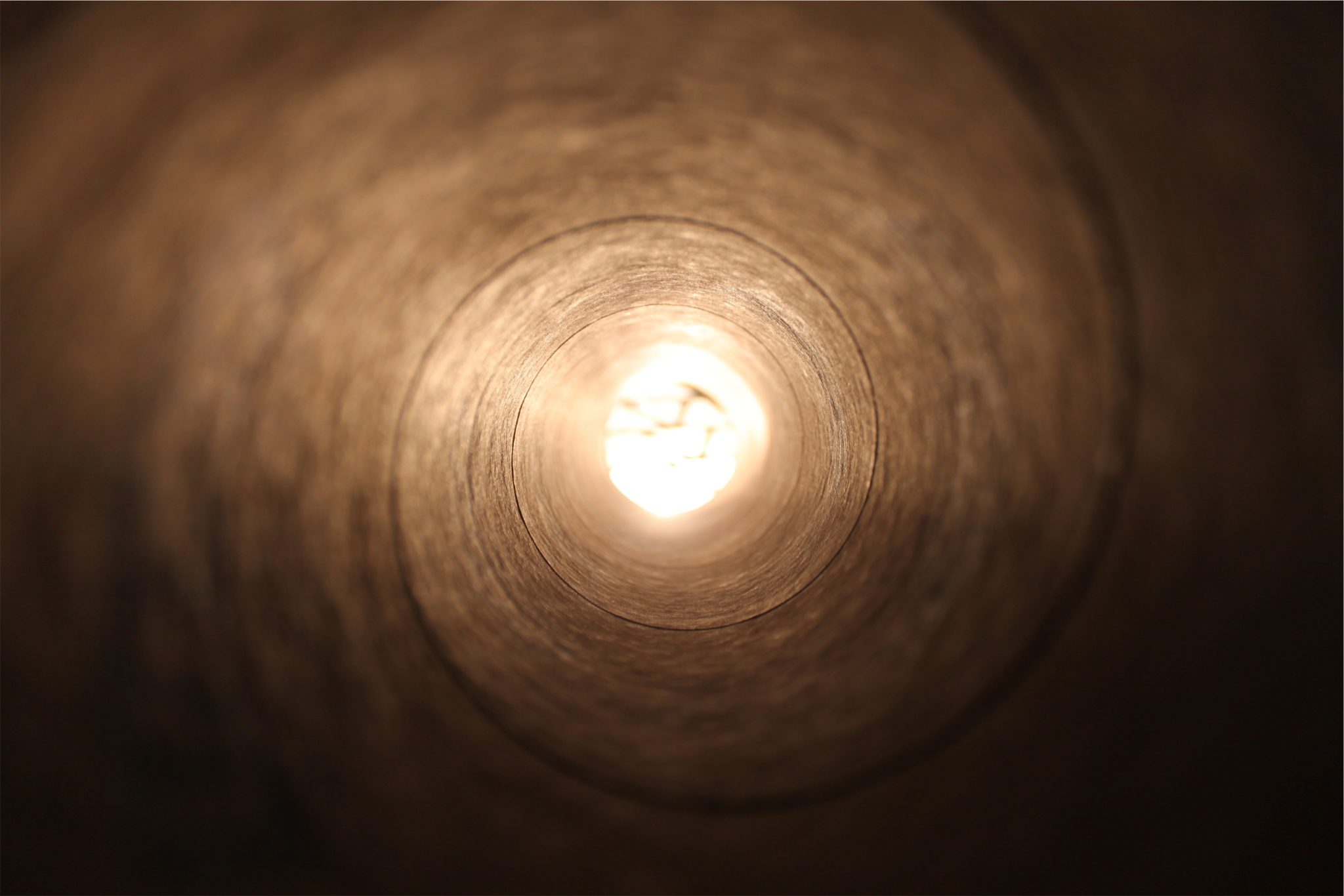Dispatch from Atzilut
— Samach-Vav Part 12 —
Have you ever met a Tzaddik?
Wait a minute… What exactly is a tzaddik?
When Grandma Bertha would call someone a “tzaddik” she simply meant a kind and giving person – a good guy. Reminiscing about the family she would compare uncles: “Uncle Joe? – vey iz mir. Don’t even ask. Uncle Shmerel – nu, nisht-koshe (so-so; not bad). But Uncle Ben – now he was a real tzaddik.” Or when you would bring her a warm sweater, she would exclaim: “Oy mein tayere Berele – what a tzaddikel you are…”
As a positive euphemism (or a purr word) “tzaddik” can loosely mean a nice guy. Other, more learned individuals may tell us that a tzaddik is someone that does many mitzvot and studies much Torah.
But the true meaning of a tzaddik – and its implications – is far more profound. Indeed, Rabbi Schneur Zalman of Liadi must have caused some uproar – and still aggravates many to this very day who would have otherwise thought themselves as tzaddikim – when he wrote in Tanya (chapter 13) that:
“Even one whose whole aspiration is in G-d’s Torah, which he studies day and night for its own sake [no ulterior motive], this is still no proof whatever that [he is a Tzaddik, i.e.] the evil has been dislodged from its place.”
In this week’s installment of Samach-Vav, which discusses the discourse delivered a century ago this week, we get a rare glimpse into the personality of a true tzaddik – into that rare individual who is, in Kabbalistic language, a soul from the world of Atzilut.
*
This week we begin reading Leviticus, the third book of the Torah, which is also called the Book of Offerings. The theme of this book is captured in the opening verse of Leviticus:
“A person who will offer of himself an offering to G-d; from an animal… shall you offer your offering.”
What does it mean to offer yourself to G-d? Why are these offerings so vital – to the extent that they constitute the primary service in the Holy Temple, and an entire book in Torah, and several tractates in the Talmud, is dedicated to discussing the detailed laws of the Temple offerings?
The answer lies in the phraseology of the verse. As Rabbi Schneur Zalman of Liadi explains: For man to become closer (“offer” in Hebrew, yakriv, means “draws close”) to the Divine he must bring the offering of himself. He must sacrifice his personal “animal,” the narcissism of the evil inclination that is called the animal soul.
In this week’s Samach-Vav discourse, which begins with the same title (“A person who will offer of himself”) the Rebbe Rashab enlightens us, in his inimitable profound manner, how the opening verse, which encapsulates the entire Book of Offerings, embodies the central purpose of life: Getting close to the Divine, by offering oneself to G-d, is the ultimate calling of life.
Samach-Vav explains that to get close to, and unite with, the Divine – and create a home for the Divine Essence in our lowly world – requires two things: 1) The self-generated human initiative generated from below (not one inspired from above) which introduces unprecedented Divine energy; the innermost aspect and essence of the Infinite Light” – the essence of the Divine “supra-conscious.” 2) An intimate relationship with the Divine, which is ultimately best understood through the metaphor of light, which is nothing more than a reflection of the Essence, and thus serves as the ultimate bridge between the infinite and the finite, the Divine and the mundane.
After a long discussion on the features of light – both in its source and outside of it – the Rebbe Rashab, 100 years ago this week, returns to conclude his explanation on the nature of the world of Atzilut and its root – the narrow ray of light (the kav).
What is Atzilut and why is it relevant to us? Atzilut is the quintessential universe – the “perfect” parallel version of our world. It is therefore the benchmark by which we measure every aspect of life as we know it. When we juxtapose the image of our lives over the image of Atzilut we can recognize where our imperfections lie. Just as when we contrast an imperfect circle with a perfect one. If you want to know what your life looks like, you need to have a perfect backdrop to which you can compare where you are and where you can be.
If life is a machine, Atzilut is the machine working to perfection. However, Atzilut becomes concealed from our perception, and lies hidden beneath layers upon layers of consciousness that can deceive us into ignoring or forgetting the inner forces that shape reality.
Atzilut is the perfect state of existence due to the fact that it combines two opposite features: On one hand Atzilut (Adam) is a world of structure, with ten sefirot (Chochma, Binah etc.) – the basic building blocks of all existence. At the same time the word “Atzilut” means “impart” or “emanate” and also “close” – it is not a new creation, but one that “emanates” and “imparts” the light of the Kav into a conscious experience. Atzilut is the state of being that reveals the Divine light and allows us to have a comprehension of the Divine.
Atzilut, called “adam,” therefore has two sensations: On one hand “adam” means that it is similar to and reflects that which is above, revealing the hidden Divine light of higher levels. It therefore experiences a sense of closeness and intimacy with the Divine. On the other hand, as a world of defined structure, it senses itself as a “new” entity infinitely distant from the essential Divine light. This distance evokes a sense of profound awe and respect for the Divine.
A soul of Atzilut – a true Tzaddik – embodies both these qualities. For example, Moses, the ultimate soul of Atzilut, experienced both intense intimacy with the Divine, speaking to G-d “face to face,” while being the “humblest man that ever walked the Earth.”
This unique experience is distinguished by three key features (as explained in this week’s Samach-Vav discourse):
1) The light of the soul of Atzilut reflects and reveals the light of the kav (the ray of light flowing after the Tzimtzum), which in turn reflects and reveals the hidden light of the source of the kav – the Divine power to emanate finite light. The structured personality of the Tzaddik’s soul is a transparent reflection of the Divine power to create structure.
But relative to the Divine infinite light higher than the Kav (and surely the level of light as it is in its source, with no identity of its own), the structured dimension of the soul of Atzilut (and even the Kav) senses itself as a “new” entity, infinitely distant from that Divine dimension. And the only way that the soul can access this infinitely distant level (which is beyond its direct reach) is through exertion in Torah study.
2) The Atzilut soul, which reflects the Kav, senses infinite distance even from the root of the kav (the Divine power to emanate in a finite light), which is actually part of the Divine infinite power, and is thus infinitely distant even from the kav. Because the structure of Atzilut (even the lights of Atzilut) is an actual state of the finite, while the Divine power to create the finite is in itself infinite. Similar to the difference of the actual words written by hand, and the power within the hand to write defined words.
3) The soul of Atzilut intimately experiences the infinite dimension of the kav, how it is beyond all structure. Yet, relative to the source of this infinite light, the light senses absolute distance as well, being that the light in its source has no substance and identity at all.
The Tzaddik – the soul of Atzilut – is the ultimate interface between the Divine and the human, between the infinite and the finite structure. And like any interface it has a dual quality, one that reflects the Divine and the other that speaks to the human, one that is intimate with G-d and the other that feels its distance, one that feels love and the other that feels awe.
The dual nature of Atzilut – a Divine structure – will help us understand the meaning of Divine service: Offering oneself to G-d.
The operative word in this verse – “A person who will offer of himself an offering to G-d” – is “adam” (a person). “Adam” refers to the world – and the souls – of Atzilut which, like light, is a reflection of the Divine. It therefore has the power to get close (offer) to the Divine.
Simply put: Two entities that have no common denominator, no similarity, cannot get close to each other. For a human being to get close to the Divine – i.e. bring an offering, which means to draw close – he has to have within himself a similarity to the Divine.
And it is this level of Atzilut that gives us the power to bring an offering and get closer to the Divine. Moreover, it also gives us the power to offer and elevate our animal souls and material lives to G-d.
Samach-Vav parallels the Torah narrative and the annual calendar. After the groundwork is laid in the first book of Genesis, which trains and equips us with the tools we will need to transform the material world, and the transformation process begins together with the methodology how to achieve this transformation in the second book of Exodus, which reflects the progressive growth of light from the Exodus to Sinai to building the Temple – the actual work begins in the third book of Leviticus, which opens up with the service in the Temple – the purpose of all life:
“A person will offer of himself an offering to G-d.”
So too Samach-Vav: After first laying out the purpose of existence (Genesis), and the methods for transcendence from our mundane world, to get inspired and remain inspired, the hemshech (series) continues with its analysis of light. As we read through the book of Exodus, the light steadily increases in intensity, until we travel into its source and into the Divine Essence itself.
As we enter the new month of Nissan – the month of Redemption – and begin a new book in the Torah (Leviticus), Samach-Vav appropriately helps us understand this period by tying together the strings and concluding the discussion on the nature of light, which helps us understand the world of Atzilut, and by extension – the personality of a tzaddik, a soul from Atzilut.
To sum up: Being that we are not Tzaddikim ourselves, why do we need to know about the Tzaddik’s Divine Service (Atzilut), how does it help us? 1) First it teaches us how much a human being is capable of. 2) We all receive a taste of this service in the month of Nissan. 3) It allows us to understand by contrast what we achieve through our exertion below in a post-Atzilut world. 4) It empowers us with the ability to serve, bring and offering and get close to the Divine, and finally 5) integrate and be intimate with the Divine.
As we move from the book of redemption (Exodus) to the month of redemption (Nissan), and we relive the exodus and birth of the Jewish nation on Passover, we are given the power to be like a Tzaddik. What Atzilut is in space, and a Tzaddik in souls, Nissan is in time – the time of experiencing the pure energy of Divine light. [This is also consistent with the fact that the princes and leaders of each tribe brought offering to dedicate the new Temple during the first twelve days of Nissan. We therefore have the custom to read these portions on each respective day].
In this discourse the Rebbe Rashab addresses primarily the souls and light of Atzilut (adam), which reflect the higher levels of Divine light. Though he says that this light gives us the power to offer the inner “animal,” yet the main focus here is still on the light and the soul of Atzilut.
What about the Tzaddik’s containers – his body and material involvements? That is the theme of next week’s discourse, which addresses the nature of the containers (keilim) of Atzilut. That in turn will be followed, in the subsequent discourses, by the service and offerings of the souls of Biy”a (the worlds below Atzilut), whose primary nature is material, and their service consists of the hard work to sublimate the “egocentric” personality of matter.
[All souls originate in Atzilut; however most then assume the “garments” and layers of lower states of consciousness (i.e. worlds)].
How much we understand the concepts discussed in Samach-Vav is debatable. Some may even question what the point is to study such esoteric concepts. Indeed, the Rebbe Rashab himself once expressed himself by saying: We talk about these lofty concepts because when you know with whom you are dealing, you have a completely different (a new found) respect…
Same with Passover: Passover means many different things to many different people. But one thing that we can all glean from these special days is that we are given the power to reach unimaginable heights.
This is a time to just break out of the fears, inhibitions and insecurities that haunt us – and just reach for the stars.








You Wrote Simply put: Two entities that have no common denominator, no similarity, cannot get close to each other. For a human being to get close to the Divine – i.e. bring an offering, which means to draw close – he has to have within himself a similarity to the Divine.
To be similar to the Divine (as a true Tzaddik), The Divine is saying: Can you Vibrate the same way as I do? Can you give in the same manner as I do? Can you love with the same intention as I do?
If you can, then My Infinite Emanations, and your finite emanations, will touch, just as a vibrating object, placed near a similar object, affects it. Though the Infinite is not affected, yet we affect by our actions, how affected we are to the Infinte Vibration.
Or more simply, as is written, Be yea Holy, for I, The L-rd, your G-d, am Holy.
That is the whole of Torah. Now go and study. Rabbi Hillel